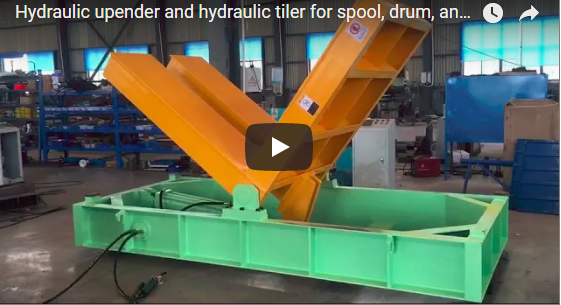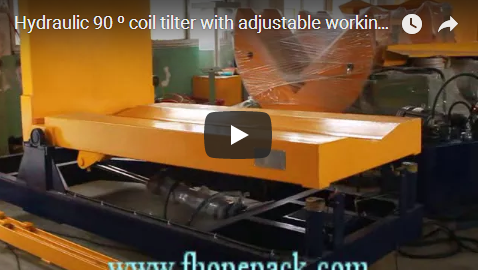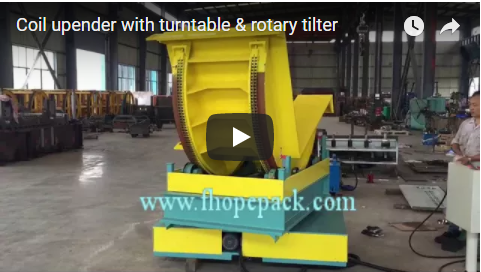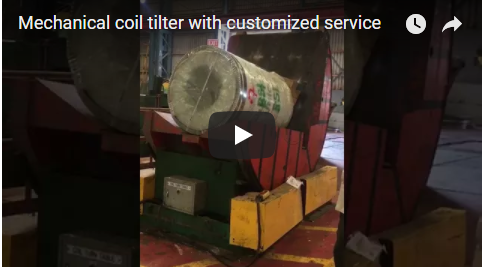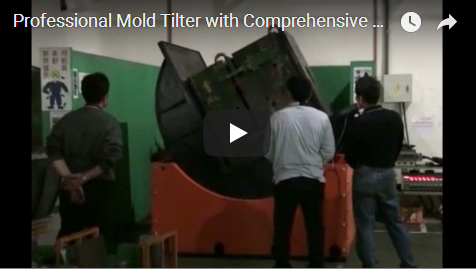Enhancing Material Handling: A Deep Dive into 180-Degree Automatic Tilters & Upenders
Efficiently and safely rotating heavy or unwieldy loads is a common challenge in various industrial sectors, from metal processing to paper manufacturing. The 180-degree automatic tilter, often referred to as an upender or inverter, is a crucial piece of material handling equipment designed specifically for this task. These machines streamline processes, enhance worker safety, and protect valuable products from damage during reorientation.
The video below demonstrates a typical 180-degree automatic multipurpose tilter in action, showcasing its smooth operation and robust construction.
1. Understanding the 180-Degree Automatic Tilter/Upender
A 180-degree automatic tilter is an electromechanical or hydraulic machine designed to rotate a load up to 180 degrees around a horizontal axis. Its primary function is to change the orientation of large, heavy, or awkwardly shaped items, such as:
- Steel or aluminum coils (from eye-to-sky to eye-to-horizon, or vice versa)
- Paper rolls
- Molds and dies
- Palletized goods
- Engine blocks or large components
By automating this rotation, businesses can avoid potentially hazardous manual handling methods or the use of less suitable equipment like cranes with slings, which can damage products or pose safety risks.
2. Key Operational Principles
While designs vary, most 180-degree tilters operate on similar principles:
- Loading: The load is placed onto the machine's platform or cradle, often using a forklift, crane, or conveyor system.
- Securing: Depending on the load type, securing mechanisms (clamps, side walls, or adjustable supports) may engage to hold the item safely during rotation.
- Rotation: The drive system (typically hydraulic cylinders or an electric motor with a gearbox and chain/belt drive) powers the rotation of the platform. The movement is controlled, often with options for variable speed or soft start/stop to prevent load shifting.
- Unloading: Once rotated 180 degrees, the load is removed from the machine in its new orientation.
Control systems usually range from simple push-button panels to more sophisticated PLC (Programmable Logic Controller) interfaces, allowing for integration into automated production lines.
3. Core Technical Specifications (Typical Ranges)
When evaluating or specifying a 180-degree tilter, key technical parameters include:
- Load Capacity: Ranging from a few hundred kilograms to over 50 tons, depending on the application.
- Platform Size: Custom designed to match the dimensions of the load (e.g., coil diameter and width, pallet footprint). Platforms can be flat, V-shaped (for coils/rolls), or feature specific fixtures.
- Rotation Speed: Typically ranges from 30 to 90 seconds for a full 180-degree cycle, often adjustable.
- Drive System:
- Hydraulic: Offers high power density, suitable for very heavy loads. Requires hydraulic power unit.
- Electromechanical: Generally cleaner, potentially lower maintenance, suitable for a wide range of loads.
- Power Requirements: Dependent on capacity and drive type (e.g., 480V/3Ph/60Hz or other standard industrial voltages).
- Control Type: Manual push-button, semi-automatic, or fully automatic PLC control.
4. Common Applications Across Industries
The versatility of 180-degree tilters makes them valuable in numerous sectors:
- Steel and Metal Processing: Rotating coils for slitting, annealing, or shipping preparation. Tilting plates or billets.
- Paper and Printing: Upending large paper rolls for printing presses or converting machinery.
- Automotive Manufacturing: Handling heavy engine blocks, transmissions, or large molds/dies.
- General Manufacturing: Inverting pallet loads for access, inspection, or transfer between different pallet types. Tilting large fabricated components.
- Logistics and Warehousing: Reorienting goods for storage, shipping, or order picking.
5. Operational Benefits & Advantages
Integrating a 180-degree automatic tilter offers significant advantages:
- Improved Safety: Eliminates dangerous manual handling and reduces risks associated with using inadequate lifting gear.
- Increased Efficiency: Speeds up the process of load rotation compared to manual methods or crane operations.
- Reduced Product Damage: Controlled motion and proper support minimize the risk of dents, scratches, or deformation to sensitive products like metal coils or paper rolls.
- Versatility: Can handle a wide range of load types and sizes, often with customization options available.
- Ergonomics: Reduces physical strain on workers.
6. Practical Considerations & Experience Sharing
From practical experience, successful implementation involves considering:
- Installation Requirements: Assess floor loading capacity, available footprint, and necessary clearances. Ensure adequate power supply is available.
- Operator Training: Proper training on safe operation, loading/unloading procedures, and emergency protocols is essential.
- Preventive Maintenance: Adhering to the manufacturer's recommended maintenance schedule (lubrication, inspection of drives, hydraulic systems, safety features) is critical for reliability and longevity. Common checks include hydraulic fluid levels and leaks, chain tension, and limit switch functionality.
- Integration: For automated lines, ensure seamless communication and material flow between the tilter and adjacent equipment (conveyors, AGVs).
- Customization: Discuss specific needs with the supplier. Options might include specific platform surfaces (e.g., non-scratch materials), integrated weighing scales, or unique control sequences.
7. Essential Safety Features
Safety is paramount with heavy machinery. Look for these common safety features:
- Limit Switches: Control the start and end points of the rotation cycle.
- Emergency Stop Buttons: Easily accessible E-stops to halt operation immediately.
- Overload Protection: Mechanisms to prevent operation if the load exceeds the rated capacity.
- Physical Guarding: Barriers or fencing to restrict personnel access during operation.
- Warning Lights/Alarms: Visual and audible signals during machine movement.
- Load Securing Systems: Clamps, pressure bars, or robust cradles designed to hold the specific load type securely.
Conclusion
The 180-degree automatic tilter/upender is a powerful tool for enhancing efficiency and safety in material handling operations involving load rotation. By understanding its operational principles, key specifications, applications, and necessary safety considerations, businesses can effectively integrate this equipment to streamline workflows and protect both personnel and products. Proper selection, installation, training, and maintenance are key to maximizing the benefits of these versatile machines.
For more details on specific models, consider exploring options like this Rotatable 180 Degree Automatic & Multipurpose Tilter .

